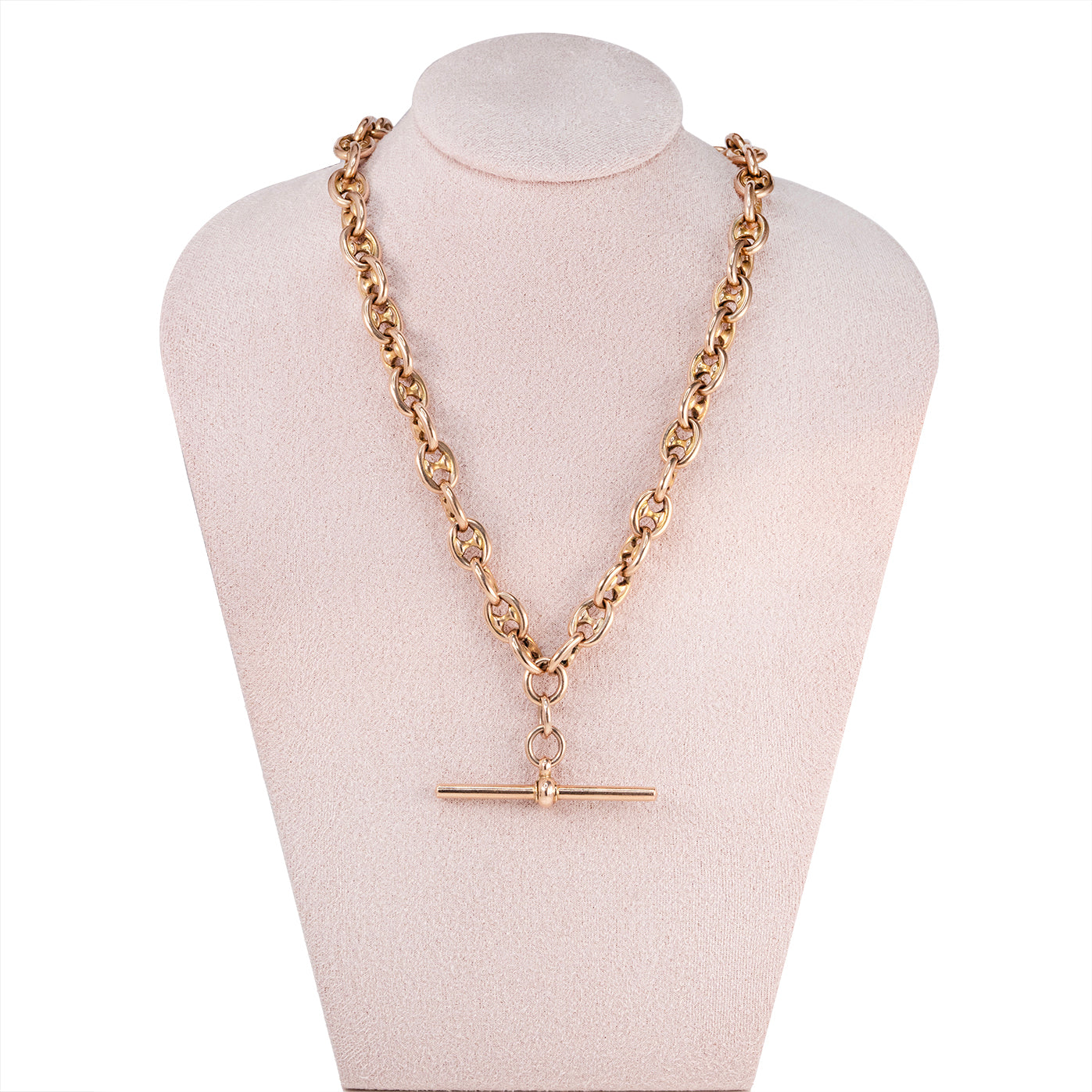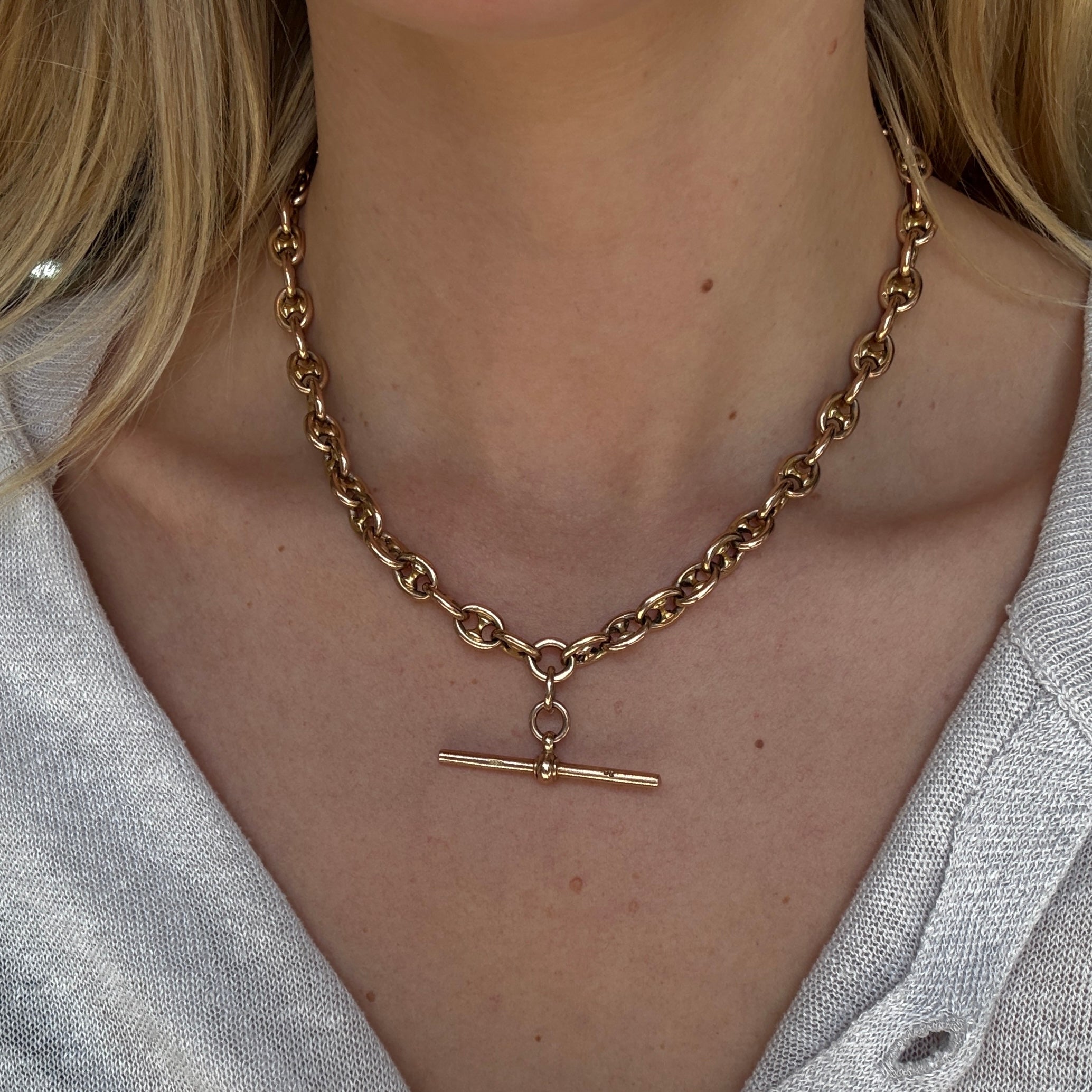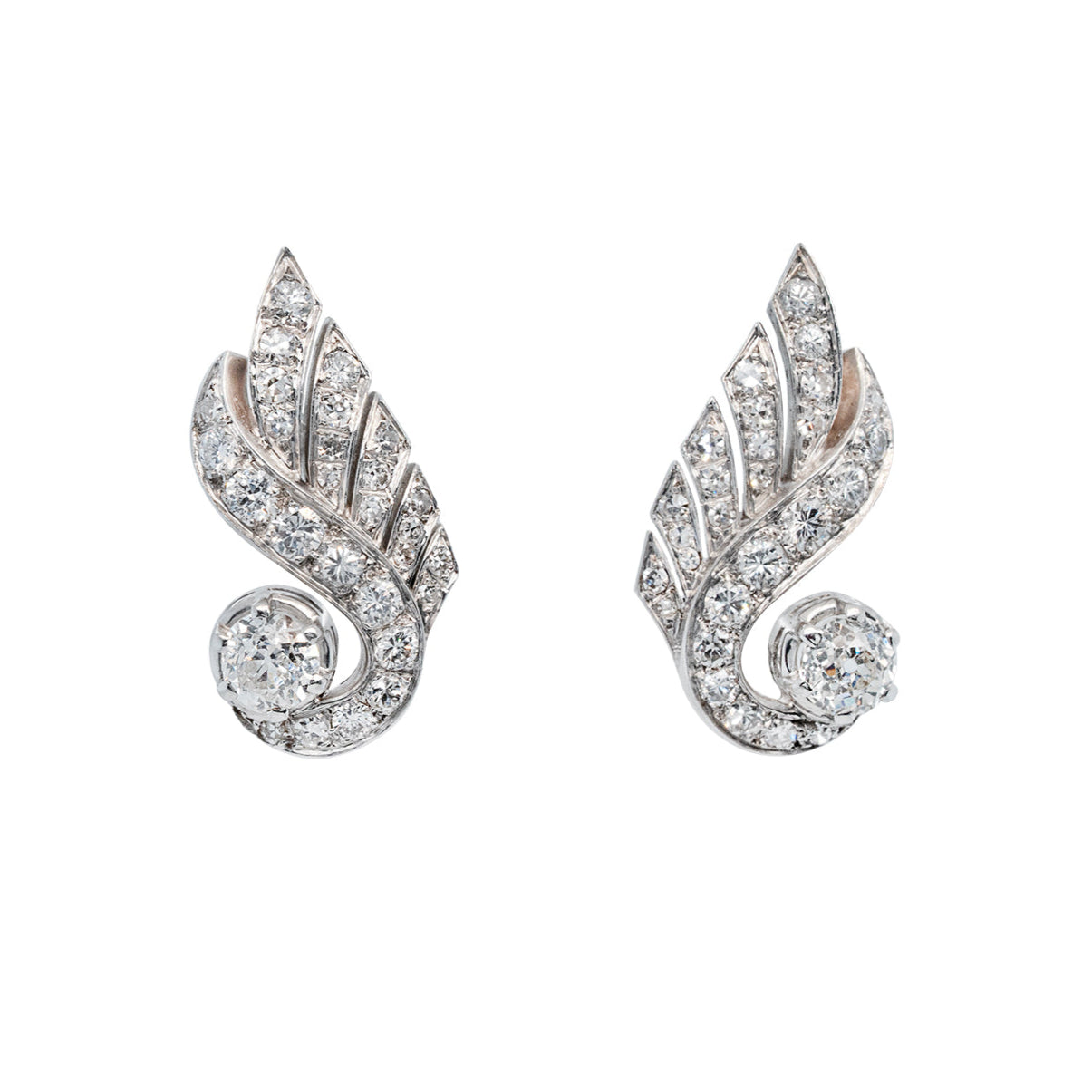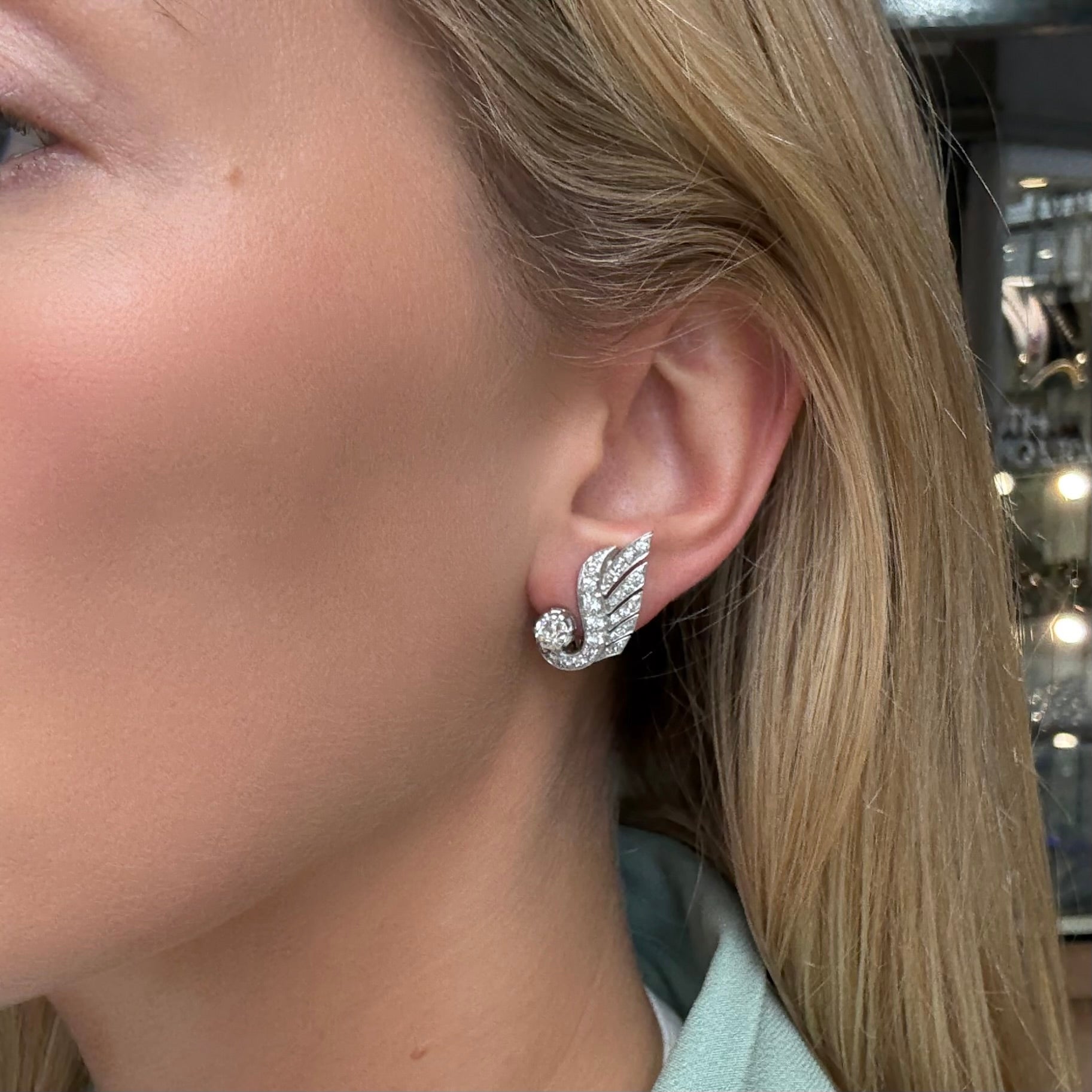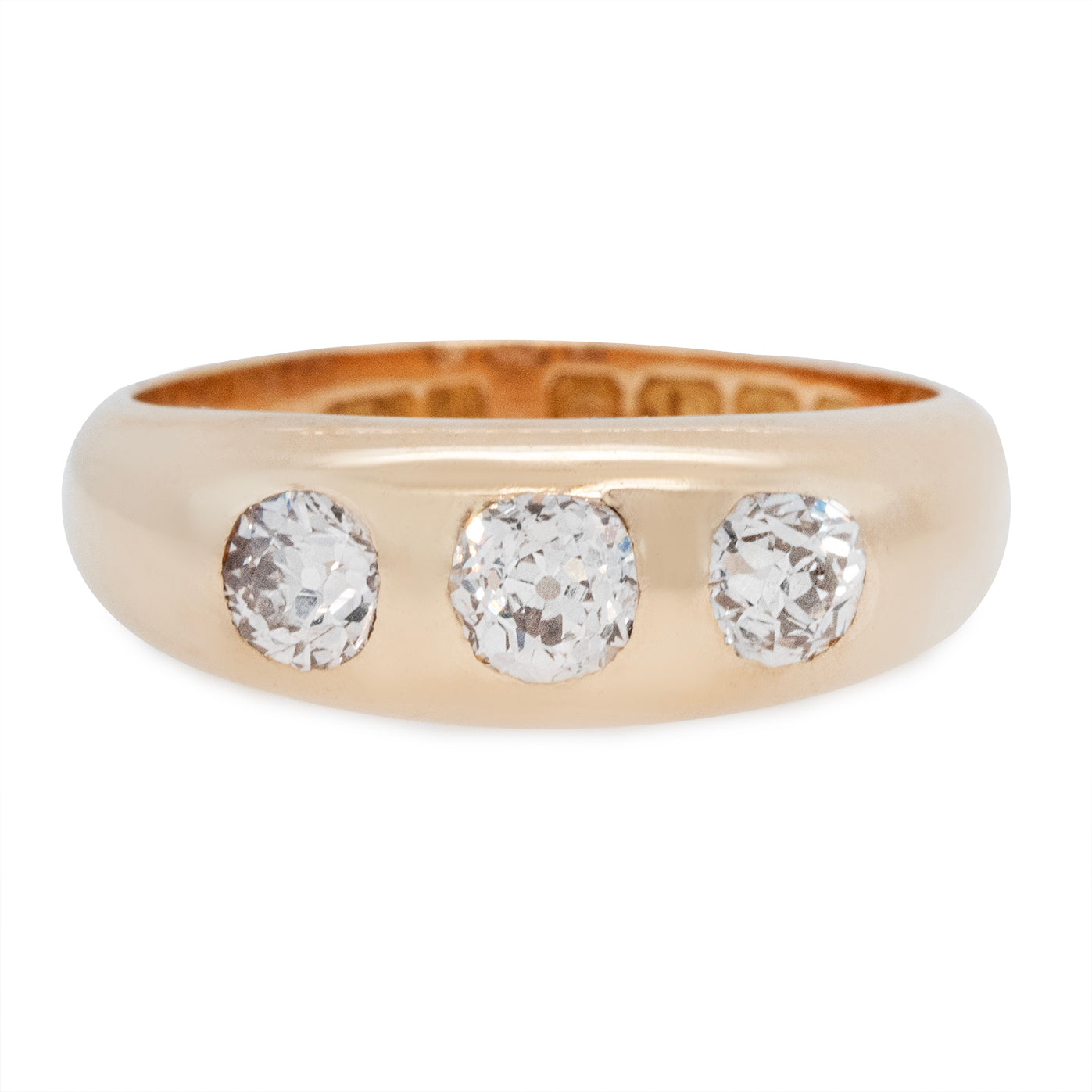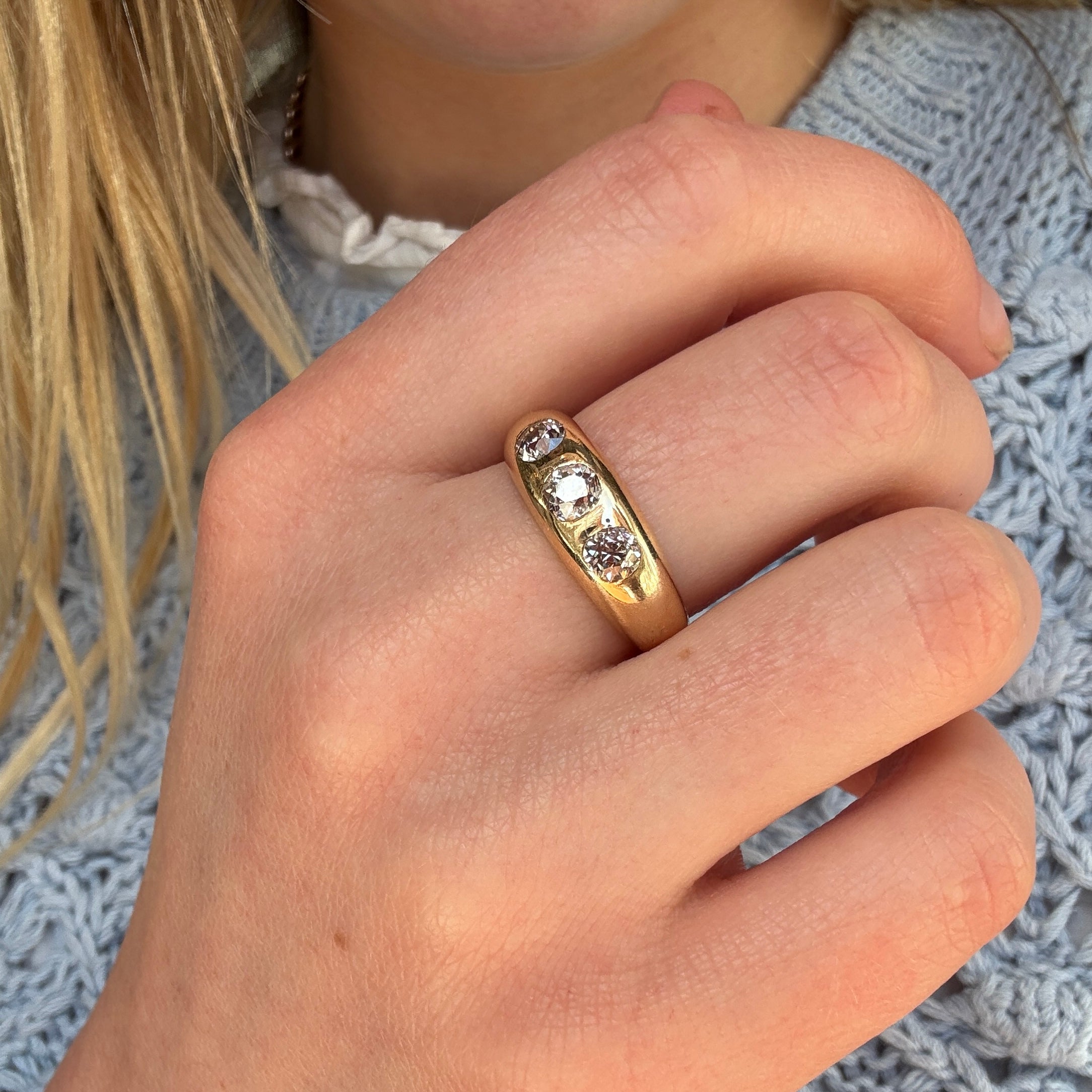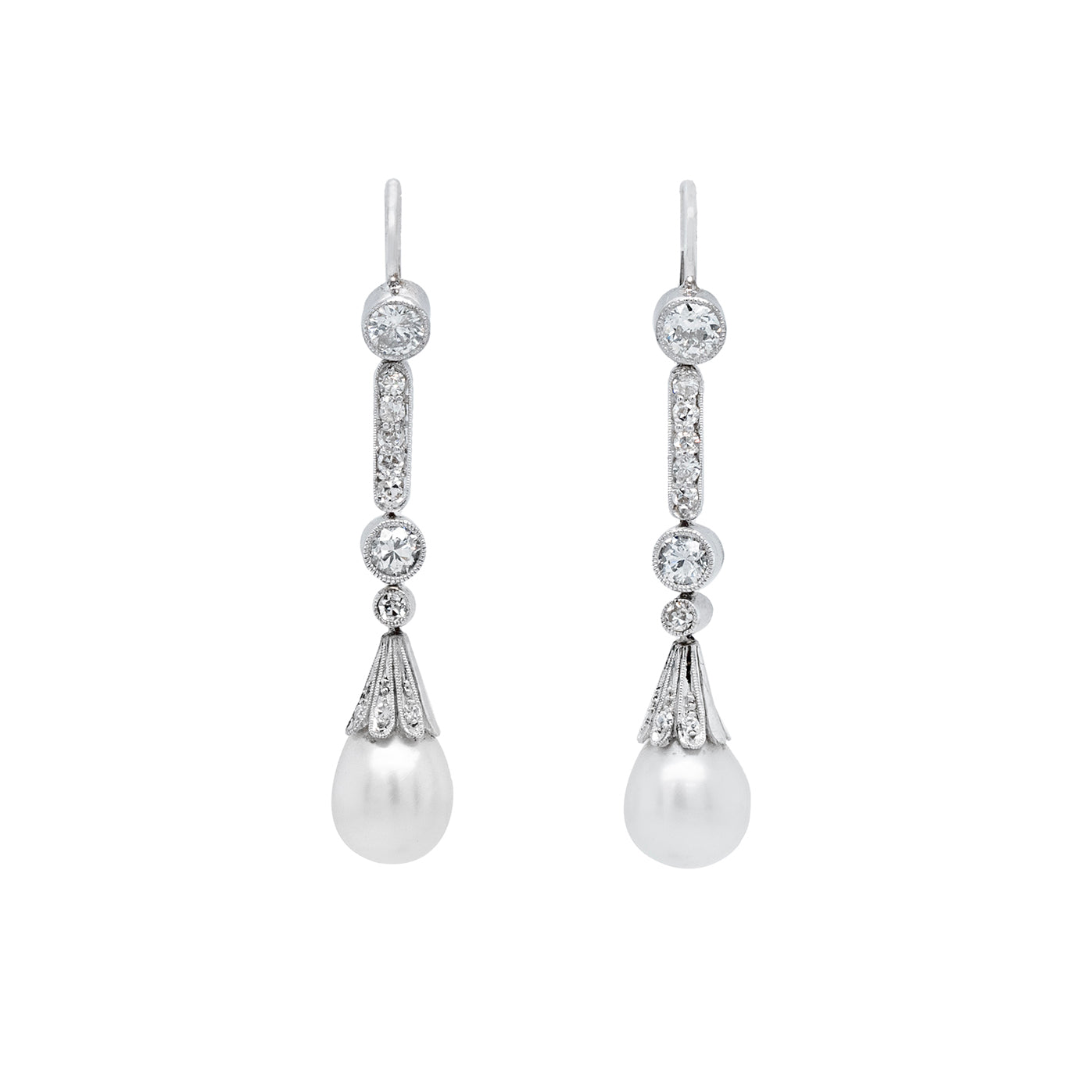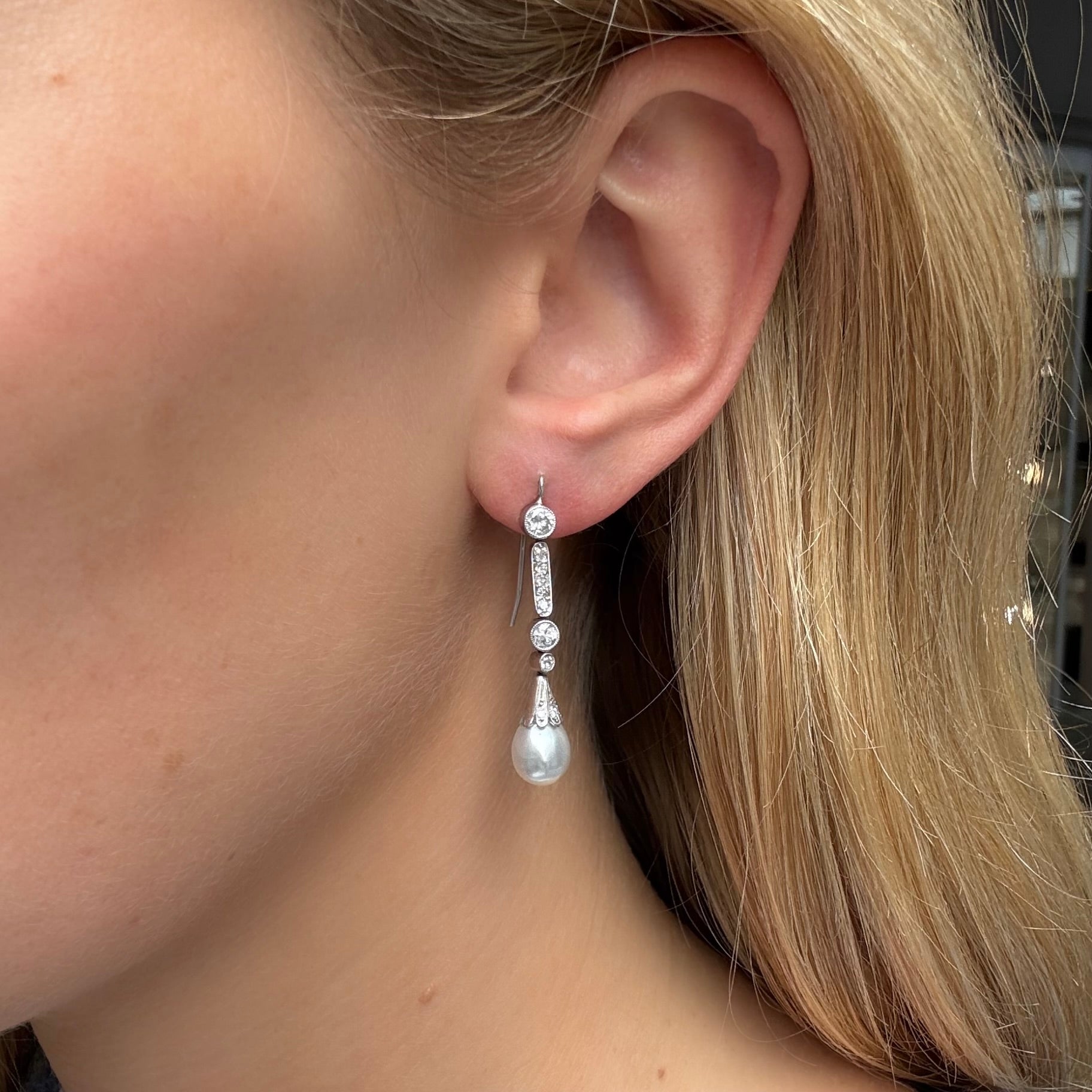A delicate Victorian ring might carry hidden messages of commitment through intricate engravings, while a hidden compartment in a locket could hold a lover’s photograph or a sweet, secret note. Whether it’s a symbolic heart, a promise ring, or a token that once belonged to a previous generation, antique jewellery holds the power to evoke timeless love stories and connect generations through shared emotions and memories.
1. Acrostic Jewellery
Acrostic jewellery was popular during the Georgian and Victorian eras, where gemstones were used to spell out secret messages. For example jewellery was elevated to a romantic art form with REGARD rings and brooches. These pieces spelled out “REGARD” using specific gemstones: Ruby, Emerald, Garnet, Amethyst, Ruby, Diamond. This acrostic approach created both a beautiful piece of jewellery and a secret message of affection. Other hidden messages included “DEAREST” and “LOVE”. Victorian jewellers also created custom pieces spelling out lovers' names or secret messages through carefully chosen gemstones, each stone's first letter forming words. These pieces combined sophisticated wordplay with stunning gemstone arrangements.
2. Heart-Shaped Lockets
Victorian and Edwardian heart-shaped lockets weren't just beautiful accessories – they were intimate vessels of love. These pieces often contained hidden compartments for carrying miniature portraits or locks of hair from loved ones, making them deeply personal tokens of affection. They carry deep symbolism and have been used for centuries as tokens of love, cherished reminders of affection, and personal keepsakes. Offering the perfect blend of beauty and intimacy, these lockets are a timeless way to say "I love you."
3. Lover's Eye Miniatures
These mysterious Georgian-era pieces featured tiny paintings of a loved one's eye, often hidden in a locket or ring, symbolising deep affection and secret devotion—making them a romantic and intimate gift that speaks volumes about love’s most private moments. Thought to have been originally created for clandestine lovers, these rare pieces allowed the wearer to keep their beloved close while maintaining an alluring discretion.
4. Language of Flowers Jewellery
Victorian jewellers crafted pieces featuring specific flowers, each carrying its own message. Forget-me-nots represented true love, while roses symbolised passion. These botanical motifs were often rendered in precious metals and gemstones. These pieces featured morning glory flowers, symbolising love's binding nature. Often crafted in gold with enamel work, they represented devotion and attachment in the Victorian language of flowers. Art Nouveau jewellery also celebrated the beauty of nature, particularly flowers and vines. Gifting a brooch with intricate floral designs, such as a rose or lily, could symbolise eternal beauty and blossoming love. These flowing, organic designs are ideal for someone who values natural elegance and the artistry of the past.
5. Snake Jewellery
After Prince Albert gave Queen Victoria a snake engagement ring, serpent jewellery became a powerful symbol of eternal love. These pieces often featured ruby or diamond eyes and intricate scale work. In the Victorian era, snake rings held deep symbolism, representing eternal love and devotion. The ouroboros – a snake eating its own tail – was a symbol of eternity and unbroken commitment. Gifting a snake ring reflects a promise to love endlessly, without beginning or end. Antique engagement rings, particularly from the Victorian period, are rich with symbolism. The classic design often features intricate bands, diamonds, and other precious stones such as sapphires and rubies. Giving a Victorian-style engagement ring, or even a vintage gemstone, reflects a commitment to a love that spans time and tradition.
6. The Lovers Knot
The Victorian era was all about romance, and the Lover’s Knot design is the perfect emblem of eternal affection.It consists of two interwoven knots or loops, symbolising the unbreakable bond and eternal love between two people. Usually crafted from gold sometimes adorned with diamonds or coloured gemstones, this design symbolises the unbreakable bond between lovers. Gifting a Victorian Lover's Knot brooch or ring communicates your desire for lasting love.
7. Posey Rings
Posey rings, also known as "poesy rings," have a rich history dating back to the 15th century and were most popular during the late medieval and Tudor periods. These small, typically gold rings were engraved with poetic, romantic inscriptions, often on the inside band. The term "posey" is derived from the Old French word poesie, meaning poetry, reflecting the rings' association with heartfelt verses. The inscriptions on posey rings were generally short, sweet, and deeply sentimental. Phrases such as "I am thine and thou art mine" or "True love is ever sure" were common, and these rings were often exchanged as tokens of affection between lovers or as a way of expressing personal vows.
8. Fede Rings
Fede rings featured two or three interlocking bands that joined to form clasped hands, symbolising friendship, engagement, or marriage. Some contained hidden hearts when assembled. The term "fede" is derived from the Italian word "fede", meaning "faith" or "fidelity." Fede rings are known for their distinctive design: two hands clasping one another, often depicted in gold or silver, sometimes holding a heart or a symbol of commitment. The clasped hands are a timeless image of love, unity, and partnership, symbolising a vow to stand together through life's challenges.
9. Miniature Portrait Jewellery
During the 16th to 19th centuries, particularly in the Georgian and Victorian eras, tiny painted portraits were set in pendants, rings, or brooches, allowing individuals to carry an image of their beloved with them at all times. The portraits were typically painted on small pieces of ivory or glass, capturing a person's likeness with remarkable detail.
10. Arrow Motifs
And last, but by no means least Cupid’s arrows piercing hearts were popular motifs in Victorian and Edwardian jewellery, representing love's swift and inevitable strike. These pieces often combined diamonds with colored gemstones. Different gemstones carried specific meanings: diamonds for enduring love, rubies for passion, sapphires for fidelity. Antique pieces often combined these stones to create complex messages of devotion.
In conclusion
Antique love token jewellery offers a tangible connection to historical expressions of romance. Whether you're a collector, gift-giver, or romantic soul, these pieces provide beautiful ways to say "I love you" through the language of historical craftsmanship and symbolism.
Whether you choose a Victorian love knot, a lover's eye miniature, or a bold Art Deco diamond, each piece is a reflection of enduring affection and deep sentiment. By giving antique jewellery, you’re not only gifting a beautiful object, but a piece of history that speaks volumes about your feelings.
